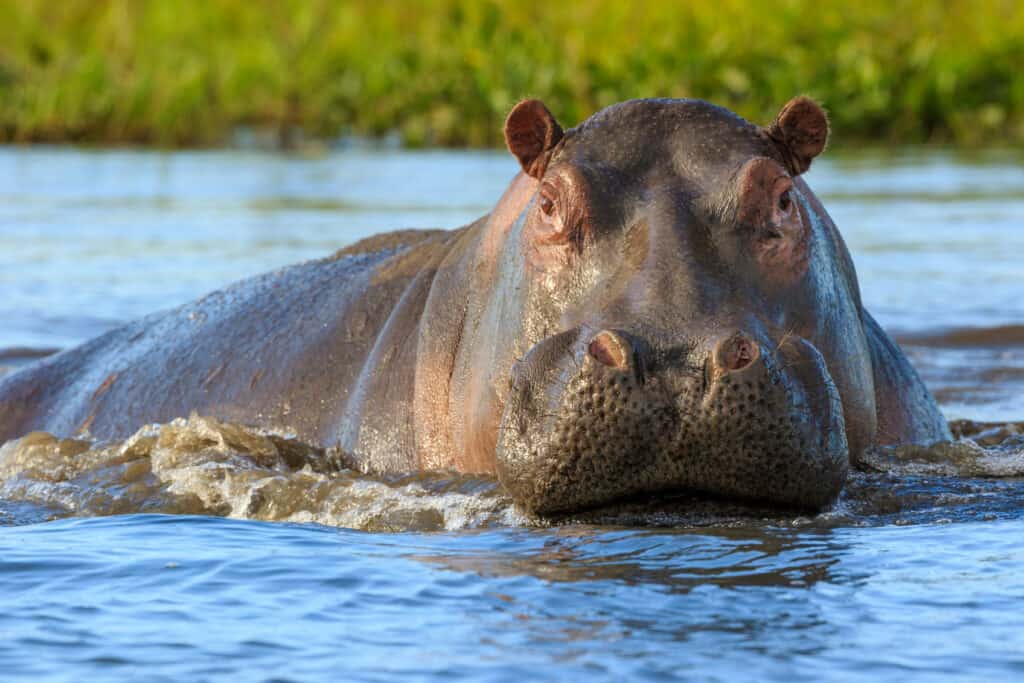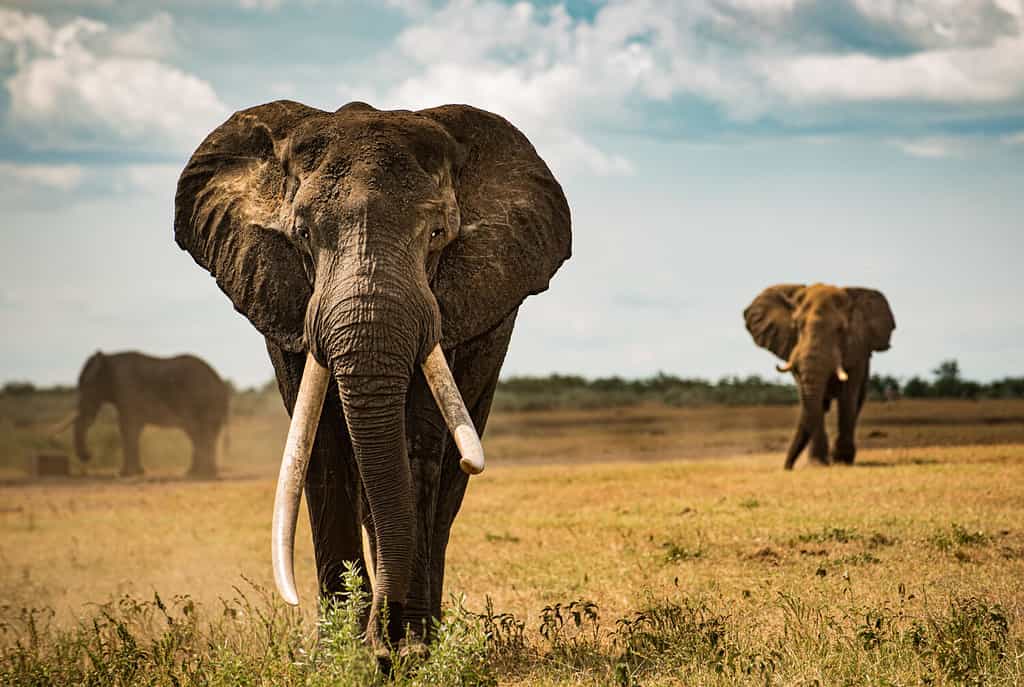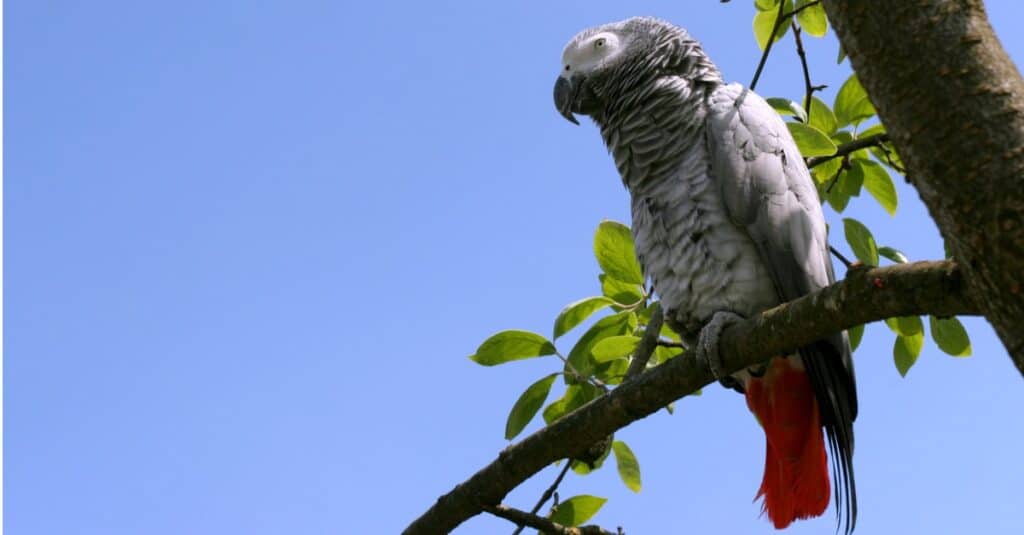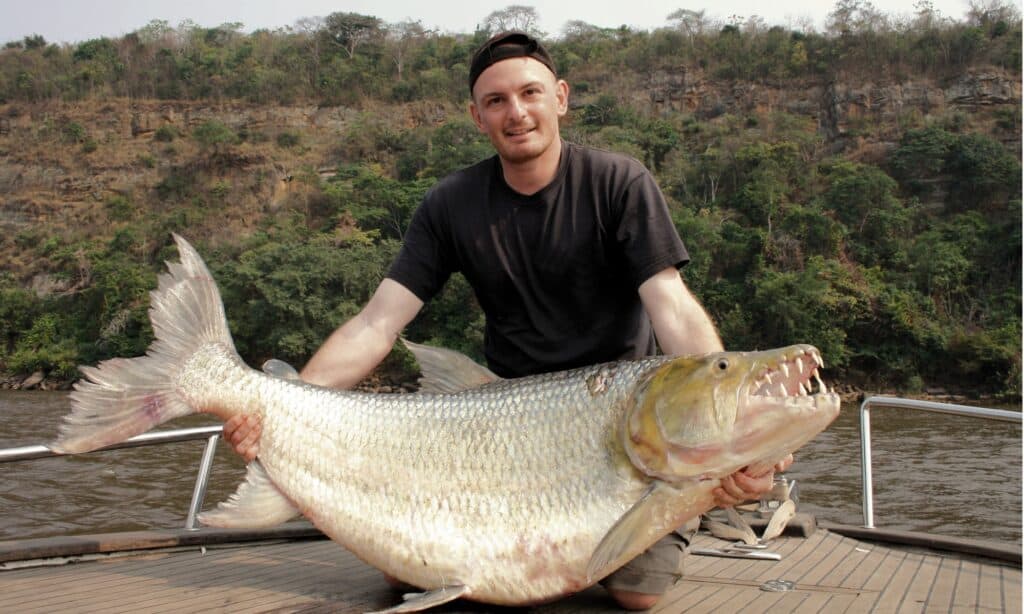The Congo River, running through the heart of Africa, holds many mysteries and hundreds of years of history. Let’s unlock those mysteries, starting with some Congo trivia.
Congo Trivia: Did You Know?
Fact #1: The Mighty Congo River – A Geological Wonder
The Congo River is Africa’s second-longest river, spanning 2,920 miles (4,700 kilometers) through the heart of the continent. Did you know that?
This incredible waterway holds secrets that have fascinated explorers, scientists, and adventurers for centuries. Discover its vital role in shaping the African landscape in this article.
Fact #2: A Lifeline for the Congo Basin
The Congo River is more than just a river; it’s a lifeline for the entire Congo Basin, one of the world’s most ecologically significant regions. The vast river has many types of life living in it, like animals, plants, and people of different cultures.
Fact #3: Threats and Guardians – Protecting the Congo’s Legacy
However, the Congo River faces a slew of threats, from deforestation to pollution, that endanger its unique ecosystem. Here, we’ll explore not only the marvels of this great river but also the ongoing efforts to preserve it for future generations.
The Congo’s Extraordinary Journey

The Congo is a wandering giant that takes its time crossing the African continent.
©Alexander Lukatskiy/Shutterstock.com
The Congo River, often referred to simply as the Congo, is a wandering giant that takes its time crossing the African continent. It starts from a source that might surprise you—the highlands of East Africa, in the heart of the Democratic Republic of Congo. It carves a path through various landscapes in Central Africa before it empties into the Atlantic Ocean.
The Source of Life – Where It All Begins
Our journey starts high in the mountains, near the border of Rwanda and Burundi, where the Congo River’s headwaters can be found. At an elevation of over 9,800 feet (2,990 meters) above sea level, the river begins its descent as a series of small streams and rivulets.
Flowing south, these humble beginnings gain momentum, eventually converging into the Lualaba River. This marks the true birth of the Congo River as it embarks on its epic journey towards the ocean.
From Lualaba to Congo – A Grand Transformation
The Lualaba River goes through a dramatic change as it flows north through the dense rainforest. It widens and deepens, taking on the name we know it by today – the Congo River. The transformation river touches the lives of millions of people and countless species of plants and animals.
The Congolese Odyssey – Through the Heart of Africa
The Congo River is truly a river of contrasts, traversing the heart of Africa and revealing the continent’s breathtaking diversity. Along its journey, the river meanders through a stunning array of landscapes, from dense rainforests to savannahs, plateaus, and swamps. It is a lifeline for the people who call these regions home, providing sustenance, transportation, and freshwater.
The Final Leg – Into the Atlantic Embrace
Our journey with the Congo River ends as it reaches the Atlantic Ocean. After a nearly 2,920-mile (4,700-kilometer) voyage, the river fans out into a vast estuary. Here, its fresh waters meet the saltwater of the Atlantic, creating a unique ecosystem teeming with life.
Wildlife of the Congo River

The Congo River is home to one of the world’s largest populations of hippos.
©Radek Borovka/Shutterstock.com
As we travel along the Congo River, it becomes apparent that this river is not just a vital artery for humans but also a sanctuary for a staggering variety of wildlife.
Let’s take a closer look at some of the fascinating creatures that call the Congo home.
1. Hippopotamus: Lords of the River
The Congo River is home to one of the world’s largest populations of hippos. We often see these massive herbivores lounging in the river’s shallows during the day, venturing onto land at night to graze. Hippos help the river by fertilizing the water with their dung, which helps fish have food to eat.
2. African Elephant: Savannah Giants

African
elephants
can be found in the rainforests surrounding the Congo River.
©Johann Mader/Shutterstock.com
In the broad savannahs surrounding the Congo River rainforests, you’ll find African savannah elephants, the savannah-dwelling cousins of their forest counterparts. These intelligent giants roam the flat savannahs, contributing to seed dispersal and maintaining the delicate balance between the grasslands and the rainforest ecosystem.
3. African Lion: Apex Predators
Although not as numerous as they once were, African lions still patrol the river’s banks in search of prey. These apex predators are a crucial part of the Congo’s food chain, regulating herbivore populations and ensuring the health of the ecosystem.
4. African Grey Parrot: Feathered Jewels

The Congo River Basin is a treasure trove of avian diversity, including the striking African gray parrot.
©iStock.com/AJevs
The Congo River Basin is a treasure trove of avian diversity, including the striking African gray parrot. These intelligent and highly vocal birds are sought after in the illegal pet trade, making conservation efforts crucial to their survival.
5. African Forest Elephants: Hidden Gua
The Congo River Basin is also home to the elusive African forest elephant, a distinct species adapted to life in the dense forests. These elephants, with their smaller size and rounded ears, are expert navigators of the jungle, vital for seed dispersal and maintaining forest health.
Threats to the Congo River
Despite its grandeur and ecological significance, the Congo River faces many threats that could jeopardize its future. Understanding these challenges is essential to preserving this natural wonder for generations to come.
1. Deforestation: The Silent Destroyer
The Congo Basin has been subject to rampant deforestation due to logging, agriculture, and infrastructure development. The loss of these vital forests not only reduces carbon sequestration, but also disrupts the habitats of countless species.
2. Pollution: An Ongoing Concern
Pollution is another significant issue facing the Congo River. Industrial and domestic pollutants find their way into the river, affecting water quality and endangering aquatic life. Addressing pollution is crucial for maintaining the health of the river’s ecosystem.
3. Overfishing: A Struggle for Sustainability

Overfishing is a growing concern in the Congo River.
©iStock.com/David_Pibrac
Overfishing is a growing concern in the Congo River. As demand for fish increases, unsustainable fishing practices can deplete fish populations and threaten food security for communities along the river.
4. Infrastructure Development: Balancing Progress and Preservation
The construction of dams, roads, and ports can have profound effects on the Congo River and its surrounding environment. While these projects can stimulate economic development, they must be carefully planned to minimize their impact on the river’s ecosystem.
Protecting the Congo River
Thankfully, there are numerous initiatives and organizations dedicated to safeguarding the Congo River and the precious ecosystems it supports. Let’s explore some of the efforts being made to protect this natural wonder.
1. Conservation International: A Force for Change
Conservation International, in collaboration with local communities and governments, works tirelessly to preserve the biodiversity of the Congo Basin. They focus on sustainable land management, conservation of endangered species, and support for community-led initiatives.
2. World Wildlife Fund (WWF): Safeguarding Wildlife
The WWF is actively engaged in the protection of key wildlife species in the Congo River Basin. Their efforts include anti-poaching campaigns, habitat restoration, and research to better understand the needs of these unique creatures.
3. Sustainable Fishing Initiatives: A Path to Balance
Several organizations are working to promote sustainable fishing practices in the Congo River. By engaging with local communities and implementing responsible fishing methods, these initiatives aim to ensure that fish populations can thrive while meeting the nutritional needs of the people.
4. Hydropower Development: Sustainable Energy Solutions
Balancing the need for energy development with conservation is challenging. Responsible hydropower projects aim to harness the river’s energy potential while minimizing ecological impacts and ensuring downstream communities benefit from clean energy.
Points of Interest Along the Congo River
Our journey along the Congo River wouldn’t be complete without exploring some of its captivating points of interest. From vibrant cities to pristine wilderness, the river’s banks offer a wide array of experiences.
1. Kinshasa: The Capital on the River
Kinshasa, the capital of the Democratic Republic of Congo, is situated along the Congo River. This bustling metropolis offers a fascinating blend of modernity and traditional culture, with vibrant markets, historical sites, and a thriving arts scene.
2. Kisangani: The Gateway to the Jungle
Kisangani, often called the “Gateway to the Congo,” is a city nestled in the heart of the rainforest. It’s an excellent starting point for exploring the lush jungles and wildlife reserves of the region.
3. Goma: A City of Volcanoes
Goma, located on the shores of Lake Kivu, is a city overshadowed by the looming presence of nearby volcanoes, including Nyiragongo. It’s a unique destination for adventurers interested in exploring the volcanic landscapes of the Congo.
4. Bonobo Conservation Initiative: A Haven for Great Apes
The Congo River Basin is one of the last strongholds for the endangered bonobo, a close relative of the chimpanzee. The Bonobo Conservation Initiative works diligently to protect these remarkable primates and their habitat.
5. Bas-Congo: Where River Meets Ocean
At the river’s mouth, you’ll find Bas-Congo, a province with a rich cultural heritage and stunning coastal landscapes. It’s an ideal place to witness the transition from freshwater to saltwater and explore the region’s unique traditions.
Important Points to Know
As you plan your journey to explore the Congo River, there are several essential points to keep in mind:
1. Travel Preparations
Before embarking on your adventure, make sure to obtain the necessary travel documents, vaccinations, and permits. It’s also essential to research the specific areas you plan to visit, as conditions and requirements may vary.
2. Respect Local Cultures
The Congo River Basin is home to diverse cultures and communities. Show respect for local customs, traditions, and languages, and seek opportunities to engage with and learn from the people you meet along the way.
3. Safety Considerations
While the Congo River offers incredible experiences, it’s important to stay informed about safety conditions in the regions you plan to visit. Consult with local authorities and travel advisories to make informed decisions.
4. Sustainable Travel
Consider the environmental impact of your journey and strive to minimize your footprint. Support local conservation initiatives and responsible tourism practices to help protect the Congo River’s ecosystem.
In conclusion, the Congo River is a testament to the incredible beauty and biodiversity of the African continent. Its journey from the highlands of East Africa to the Atlantic Ocean is a captivating story of nature’s resilience and the rich cultures it sustains. However, as with many natural wonders, the Congo River faces challenges that require our attention and dedication to conservation.
By understanding the importance of this great river and the efforts being made to protect it, we can ensure that future generations will have the opportunity to explore its wonders and be inspired by its majesty. Whether you’re an intrepid explorer, a wildlife enthusiast, or simply someone seeking to appreciate the natural world, the Congo River offers a once-in-a-lifetime adventure that will leave an indelible mark on your soul.
Let’s finish up with a little trivia challenge:
The Congo Challenge
- Question: What is the rank of the Congo River in terms of length among the world’s rivers?
- A) First
- B) Second
- C) Third
- D) Ninth
- Question: What is the deepest river in the world, with depths of over 750 feet (230 meters)?
- A) Amazon River
- B) Nile River
- C) Mississippi River
- D) Congo River
- Question: Which ancient kingdom gave the Congo River its name?
- A) Kongo Kingdom
- B) Nile Kingdom
- C) Amazon Kingdom
- D) Sahara Kingdom
- Question: What is the second largest rainforest in the world through which the Congo River flows?
- A) Amazon Rainforest
- B) Borneo Rainforest
- C) Congo Rainforest
- D) Australian Rainforest
- Question: What alternative name is sometimes used for the Congo River?
- A) Nile River
- B) Zambezi River
- C) Zaire River
- D) Niger River
- Question: Which European explorer was the first to sight and enter the Congo River in 1482?
- A) Christopher Columbus
- B) Vasco da Gama
- C) Ferdinand Magellan
- D) Diego Cao
- Question: What are the three main tributaries of the Congo River?
- A) Nile, Amazon, and Yangtze
- B) Ubangi, Sangha, and Kasai
- C) Danube, Rhine, and Seine
- D) Mekong, Ganges, and Indus
- Question: How many islands are estimated to be in the Congo River?
- A) 100
- B) 1,000
- C) 4,000
- D) 10,000
- Question: How many times does the Congo River cross the equator?
- A) Once
- B) Twice
- C) Three times
- D) It doesn’t cross the equator.
- Question: Which river has a volume of water discharge that is second only to the Congo River?
- A) Nile River
- B) Mississippi River
- C) Amazon River
- D) Yangtze River
Answers:
- B) Second
- D) Congo River
- A) Kongo Kingdom
- C) Congo Rainforest
- C) Zaire River
- D) Diego Cao
- B) Ubangi, Sangha, and Kasai
- C) 4,000
- B) Twice
- C) Amazon River
The photo featured at the top of this post is © iStock.com/Fanny Salmon
Thank you for reading! Have some feedback for us? Contact the AZ Animals editorial team.







